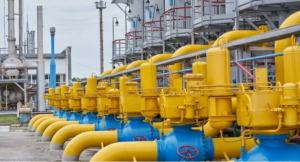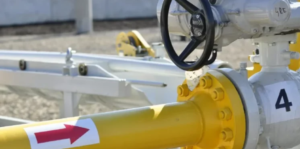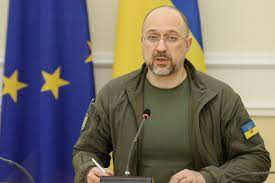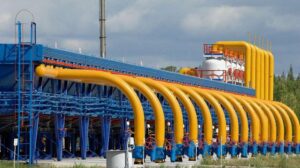
The National Energy Regulatory Agency (ANRE) of Moldova has approved the extension and updated conditions of the joint regional project for the transportation of natural gas along the so-called “Route 1” through the Trans-Balkan pipeline, which provides for a 50% tariff reduction for Moldova and Romania for gas supplies to Ukraine.
According to the agency, the decision was taken at the ANRE Council meeting on October 24, 2025 at the initiative of operators of gas transportation systems from Greece, Bulgaria, Romania, Moldova and Ukraine. The project is aimed at strengthening regional energy security and ensuring stable gas supplies to Ukraine.
“The Council approved the extension of the Route 1 product for six months – from November 2025 to April 2026 – as well as a 50 percent reduction in gas transportation tariffs for Vestmoldtransgaz (Moldova) and Transgaz SA (Romania) on key interconnectors,” the regulator said in its decision.
The Route 1 project envisages the use of the existing infrastructure of the Trans-Balkan gas pipeline, which connects Greece-Bulgaria-Romania-Moldova-Ukraine.
Through this route Ukraine can receive gas coming from the southern direction – from LNG terminals in Greece (Revitusa, Alexandroupolis) and from Turkish storage facilities.
The reduction of the Romanian and Moldovan tariff makes supplies through this line economically more favorable and increases the flexibility of gas purchases from alternative sources.

On October 24, the National Energy Regulatory Agency of Moldova (ANRE) held an open meeting of the Board of Directors, during which it approved a 50% reduction in tariffs for gas transportation to Ukraine.
“During the meeting, the Board approved amendments to Decision No. 272/2025 on the optimization of the ”Route 1″ capacity product on the Trans-Balkan pipeline, following a joint initiative submitted by natural gas transmission system operators from Greece, Bulgaria, Romania, the Republic of Moldova, and Ukraine. The initiative aims to strengthen regional energy security and ensure natural gas supplies to Ukraine,“ according to a statement on the ANRE official website.
”The approved changes provide for the extension of the application of the “Route 1” product for 6 months (November 2025 – April 2026), the application of a 50% reduction in transportation tariffs for SRL “Vestmoldtransgaz” at the Kaushen and Grebeniki interconnection points, as well as the extension of the application of the capacity product to all relevant interconnection points along the route. The application of a 50% reduction in transportation tariffs is also provided for by the Romanian transmission system operator SA “Transgaz,” ANRE explained.
“With this decision, the Republic of Moldova is strengthening its role as a regional transit corridor, facilitating the transport of natural gas from Greece to Ukraine and contributing to the diversification of routes and sources of supply. In the long term, transportation volumes are expected to increase and, as a result, the associated tariffs will decrease for users of the transport system operated by SRL Vestmoldtransgaz,” the statement emphasized.

Ukraine is ready to extend the transit of Russian gas through its gas transportation system (GTS) at the initiative of the European Union countries, but will not extend the current contract or sign a new one with Gazprom, Prime Minister Denis Shmygal said at a press conference in Kiev on Monday.
“We are certainly not going to negotiate with the aggressor country to extend (the transit contract) and put our signatures under the agreement, but we have had repeated talks with European leaders on the basis of the European Commission. If European countries will act as a consortium or one of the European partners will act as a transit company for its own gas, we are ready to provide such a service. Here the initiative is on the side of the EU and our European partners,” he said.
“Group, association, consortium… It could be the EC, a group of European countries that are interested in preserving transit,” Shmygal specified.
At the same time, according to the Prime Minister, the GTS of Ukraine is ready to function without the transit of Russian natural gas.
As reported, the transit of Russian natural gas through the gas transportation system (GTS) of Ukraine in 2023 decreased by 28.4% (by 5 billion 812.6 million cubic meters) compared to 2022 – to 14 billion 646.6 million cubic meters.
The contract between Naftohaz Ukrainy and Gazprom for the organization of transportation, the transportation agreement between NAK and OGTSU, as well as the inter-operator agreement between OGTSU and Gazprom were signed on December 30, 2019. The contract provides for transit of 40 billion cubic meters of gas per year in 2021-2024.

Transit of natural gas through the GTS of Ukraine in June 2022 amounted to 1.25 billion cubic meters. m, which is the minimum monthly volume since 1991.
According to the GTS Operator of Ukraine, the volume of transit for the last month is three times less than in June 2021 (3.72 billion cubic meters), and a quarter lower than in May 2022.
At the same time, Gazprom in June used only 38% of the booked capacity (3.29 billion cubic meters) under a long-term contract. “Combined with the restriction of transit through the Nord Stream 1 gas pipeline, this leads to a “drainage” of the EU gas market and an increase in prices. As a result of the manipulative actions of Gazprom, gas prices in Europe have increased by almost 42% since the beginning of June,” noted in OGTSU.
“Obviously, Russia continues to blackmail Europe with a reduction in gas supplies, which is why its exchange price today already exceeds $1,600. “with the redirection of flows through Ukraine and Poland,” added the head of the operator Sergei Makogon.
As reported, the transit of natural gas through the GTS of Ukraine in 2021 amounted to 41.6 billion cubic meters. m, which is 25.4% less than in 2020 (55.8 billion cubic meters). In general, the transit capacities of the Ukrainian GTS in 2021 were used by less than 30%.
On the Ukrainian gas transport corridor in 2021-2024. there is a mandatory “reservation” for “Gazprom” – 40 billion cubic meters. m (109.6 million cubic meters per day) after 65 billion cubic meters. m (178 million cubic meters/day) in 2020.

Transit of natural gas through the gas transmission system (GTS) of Ukraine in January-October 2021 amounted to 35.3 billion cubic meters, which is 21.6% less than in the same period of 2020 (45 billion cubic meters), and 56.7% less than in ten months of 2019 (81.5 billion cubic meters), according the Gas Transmission System Operator of Ukraine (GTSOU).
In particular, in the western direction 32.456 billion cubic meters of gas were supplied by transit (to Slovakia – 22.43 billion cubic meters, to Hungary – 6.799 billion cubic meters, to Poland – 3.227 billion cubic meters); in the south direction – 2.833 billion cubic meters were supplied (to Moldova – 2.439 billion cubic meters, and to Romania – 394 million cubic meters).
In October, transit amounted to 2.634 billion cubic meters, which is 19.1% less than in September due to the cessation of gas supplies to Hungary via the Ukrainian route by Gazprom. In particular, in the direction of Slovakia, transit amounted to 2.117 billion cubic meters, Poland – 342 million cubic meters, and Moldova – 176 million cubic meters.
The GTSOU notes that according to the results of booking the capacities of the Ukrainian GTS on the RBP and GSA platforms for October 2021, Gazprom not only did not book the additional transit capacities, but also significantly reduced the use of the booked annual capacities, since no applications for transit of Russian gas to Hungary were received from October 1.
As a result, the average daily volumes of Russian gas transported through the territory of Ukraine in October fell to 86 million cubic meters, which is below the minimum volume under the current transit agreement (110 million cubic meters).
“We are concerned about the reduction in transit of Russian gas through the Ukrainian route: since October 1, the volume of pumping has been lower than the booked capacity. Although since November 1, transit to Moldova has increased thanks to a new contract for the supply of gas from the Russian Federation, however, the overall use of the Ukrainian GTS capacity for transit of Russian gas continues to decline: on average, at the beginning of November, it was 60 million cubic meters per day,” GTSOU Director General Serhiy Makogon said.

Hungary is interested in the continuation of natural gas transit across Ukraine, Hungarian Foreign Minister Peter Szijjarto said.
“I don’t understand why not ship gas via the southeastern route [after the launch of the Nord Stream 2 gas pipeline]. Hungary views this matter from a strategic standpoint, because the absence of transit across Ukraine would cause damage to our country,” Szijjarto said at a press conference following negotiations with Russian Foreign Minister Sergei Lavrov.
Each country should make decisions on sources and routes of energy supply primarily based on its own national interests,” he said.